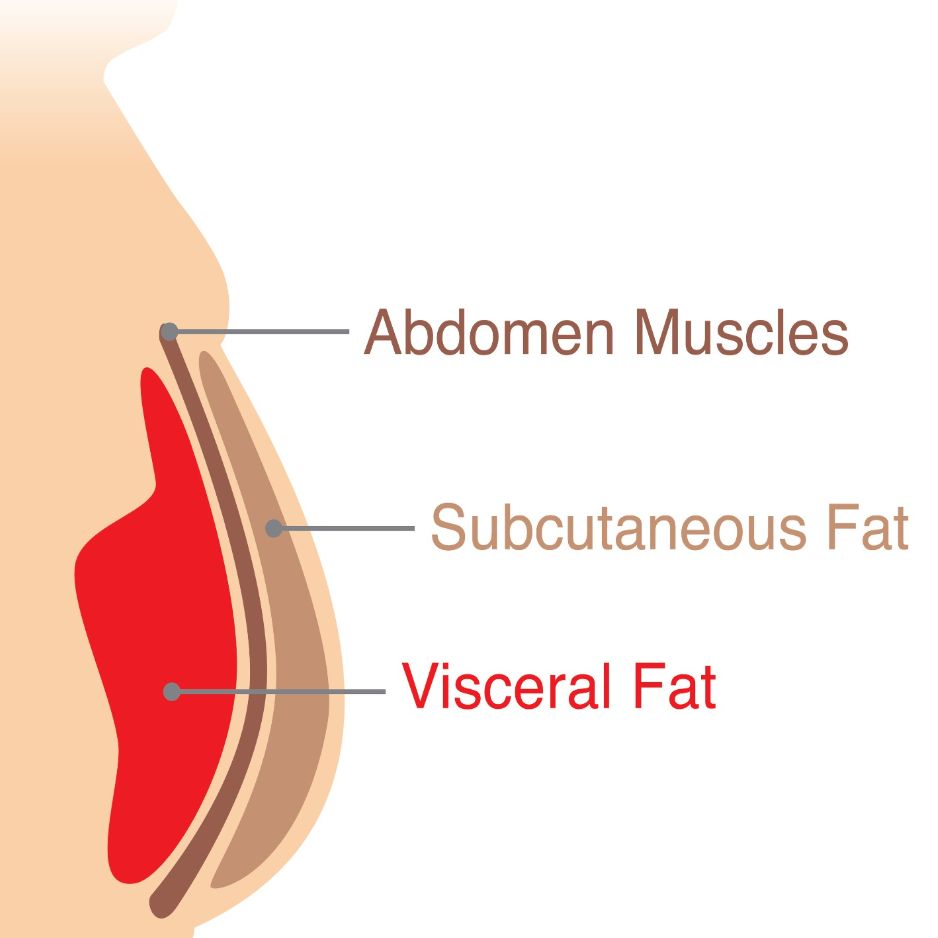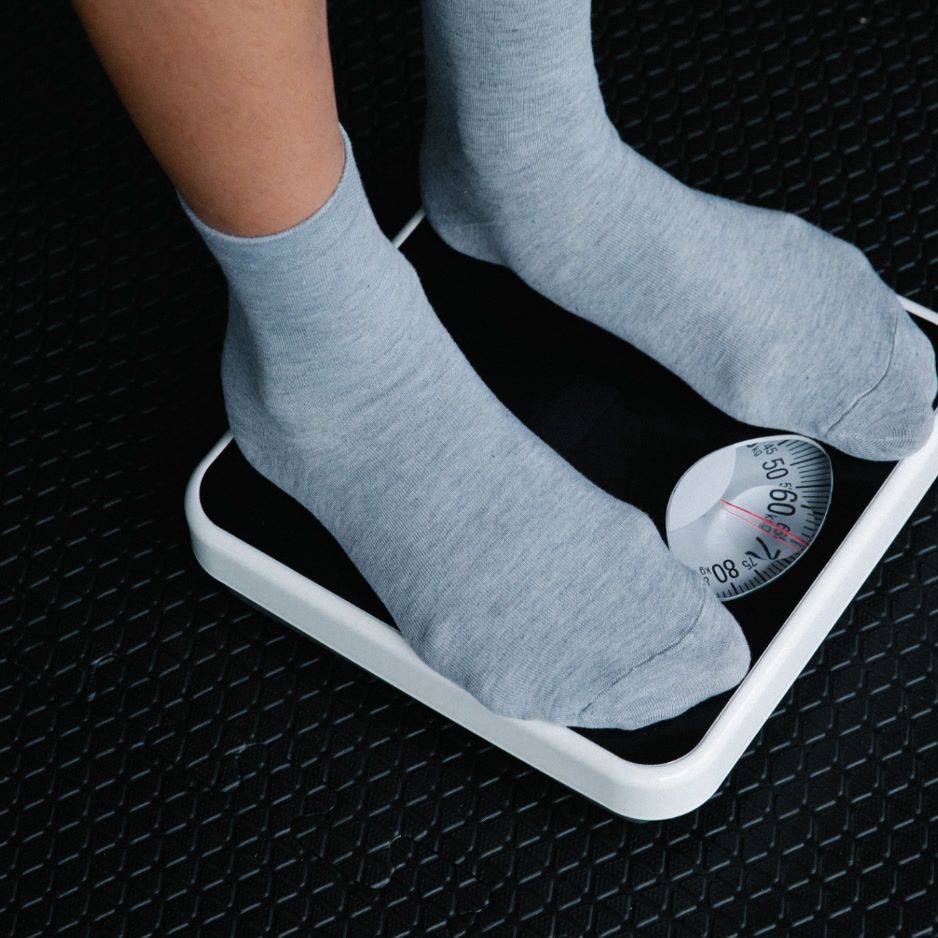Prebiotic vs Probiotic: Gut Health Guide

Prebiotic vs Probiotic: Gut Health Guide
A helpful analogy likens a diverse microbiome to a bustling city. Probiotics are the friendly citizens and prebiotics are the groceries that keep everyone fed—nurturing both ensures this internal ecosystem thrives.
This guide breaks down how prebiotics and probiotics differ, when to use each, the best food sources, and how to build a strategic synbiotic routine for optimal benefits.
Key Definitions
- Probiotics are live microorganisms (think Lactobacillus or Bifidobacterium) you ingest to add to, or rebalance, your gut flora.
- Prebiotics are special fibers and plant compounds your body can’t digest but your microbes love to eat.
- Synbiotic refers to pairing prebiotics and probiotics in the same meal or supplement for synergistic benefits.
Table 1 — Key Differences at a Glance
| Probiotics | Prebiotics | |
|---|---|---|
| What they are | Live bacteria or yeast | Non-digestible fibers & polyphenols |
| Primary job | Add beneficial organisms | Feed existing beneficial organisms |
| Found in | Fermented foods (yogurt, kefir, kimchi) & supplements | Plant foods (onions, oats, bananas, beans) & fiber powders |
| Primary Health Benefits | Provide diarrhea and IBS relief | Support improved regularity and metabolism |
| Typical side effects | Temporary bloating; rare infections in immune-compromised individuals | Gas & bloating while microbes adjust |
| Who may benefit most | Children with antibiotic-associated diarrhea, travelers, people on antibiotics | Individuals with low dietary fiber intake (<25 g/day) |
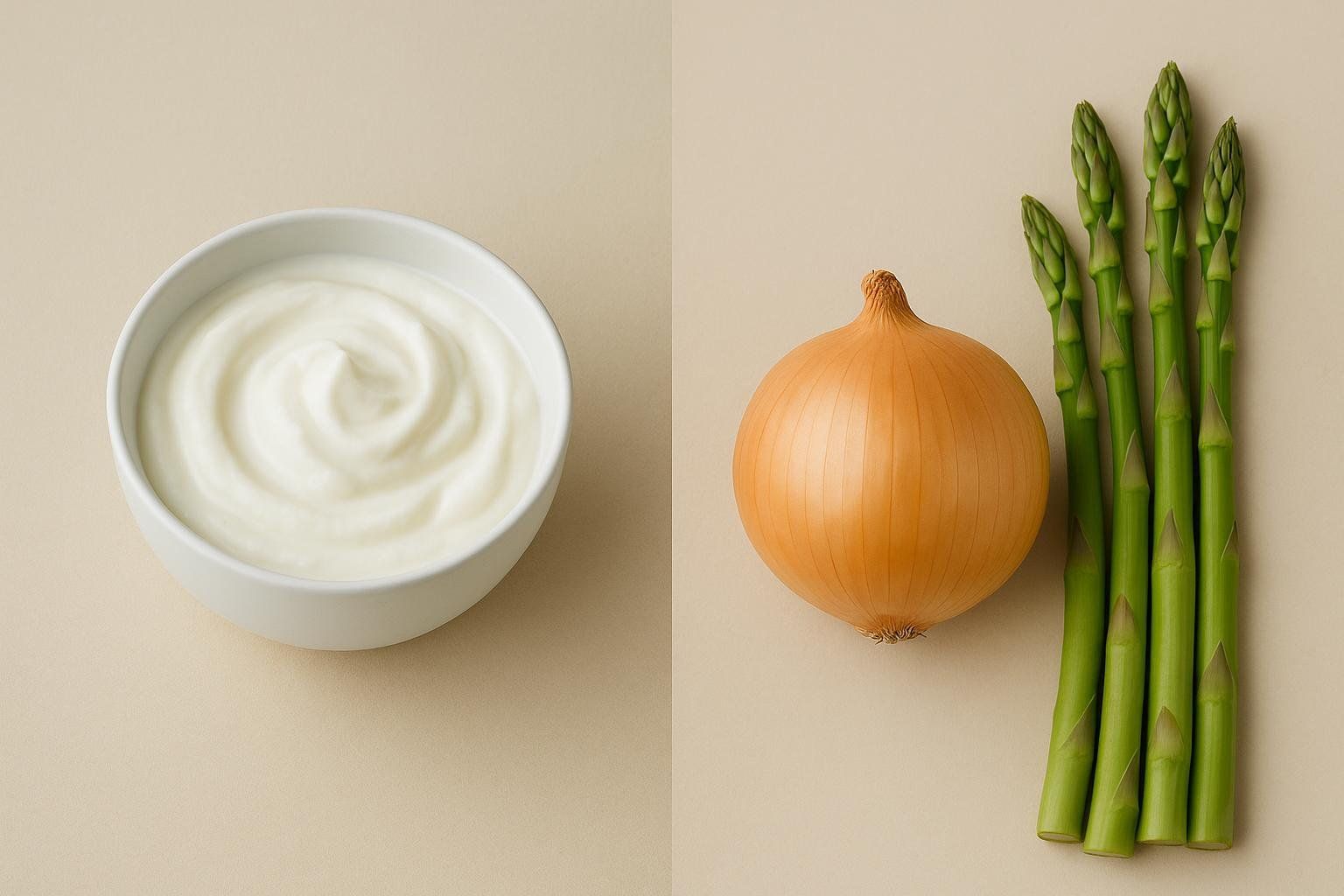
Why Your Microbiome Needs Both
Your gut hosts trillions of microbes that:
- ferment fiber into short-chain fatty acids (SCFAs) that calm inflammation;
- train immune cells to recognize friend from foe;
- manufacture vitamins like K and several B-vitamins.
Probiotics can tip the balance toward beneficial strains, but without sufficient fiber those newcomers may not survive. Prebiotics provide a steady fuel source that enables resident and supplemental microbes to carry out vital jobs effectively over time.

Evidence-Backed Benefits and Limitations
| Health Goal | What Research Says | Best Tool |
|---|---|---|
| Antibiotic-associated diarrhea | Probiotics cut incidence by ≈38 % in adults | Probiotic |
| Irritable bowel syndrome (IBS) | B. infantis 35624 with a low-FODMAP diet improved pain and bloating | Probiotic |
| Blood-sugar control | 15–20 g/day inulin lowered post-meal glucose spikes | Prebiotic |
| Bone health | Inulin-type fructans boosted calcium absorption by ≈20 % in teens | Prebiotic |
| Mood & anxiety | Psychobiotic strains show promise but evidence is mixed; use is still emerging | Emerging research; not a primary tool |
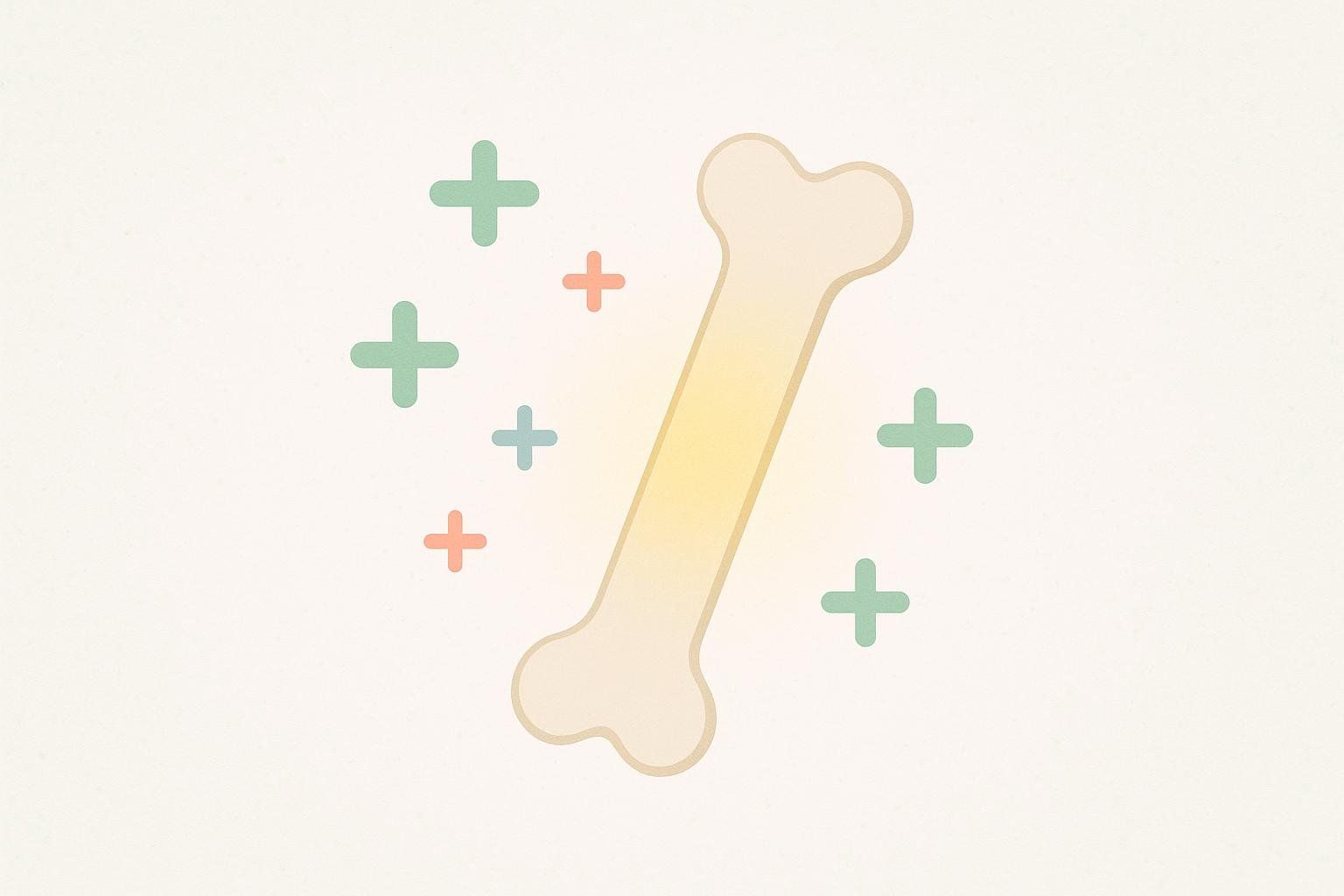
Dosage Note – Ranges below reflect published studies. Work with a qualified professional for personalized guidance.
Common Probiotic Strains & Prebiotic Fibers
| Category | Strain / Fiber | Primary Benefit | Clinically Studied Dose & Evidence | Typical Food / Supplement Source |
|---|---|---|---|---|
| Probiotic | Lactobacillus rhamnosus GG | Reduces risk of traveler’s diarrhea | ≥2 billion CFU/day, per research on traveler’s diarrhea | Fortified dairy drinks; capsules |
| Probiotic | Bifidobacterium infantis 35624 | IBS symptom relief | 1 × 10⁸ CFU/day, shown to ease IBS symptoms | Capsules |
| Probiotic | Saccharomyces boulardii | Lowers C. difficile recurrence | 500 mg twice daily, demonstrated in a 2023 RCT with vancomycin | Yeast-based powders or capsules |
| Probiotic | Lactobacillus casei Shirota | Reduces antibiotic-associated diarrhea | 6.5 × 10⁹ CFU/day, per study on AAD | Specific fermented milk drinks |
| Prebiotic | Inulin | Increases bifidobacteria & satiety | 5–15 g/day, per low-dose inulin study | Chicory root, asparagus |
| Prebiotic | Resistant starch | Improves insulin sensitivity | 15–30 g/day, per study on insulin sensitivity | Cooked-then-cooled potatoes |
| Prebiotic | Galacto-oligosaccharides | Infant colic relief & calcium boost | 3–6 g/day, per GOS infant study | Legumes, dairy whey |
| Prebiotic | Beta-glucan | Lowers LDL cholesterol | ≥3 g/day, per beta-glucan cholesterol review | Oats, barley |
| Synbiotic | Kefir (contains both) | Broad gut support | ≈1 cup/day, per review of kefir benefits | Fermented milk or water |
Food First: Top 10 Prebiotic & Probiotic Staples
Prebiotic All-Stars
- Oats & barley (beta-glucan)
- Garlic, onions & leeks (inulin + FOS)
- Asparagus & artichokes
- Green bananas & plantains (resistant starch)
- Lentils, chickpeas & black beans
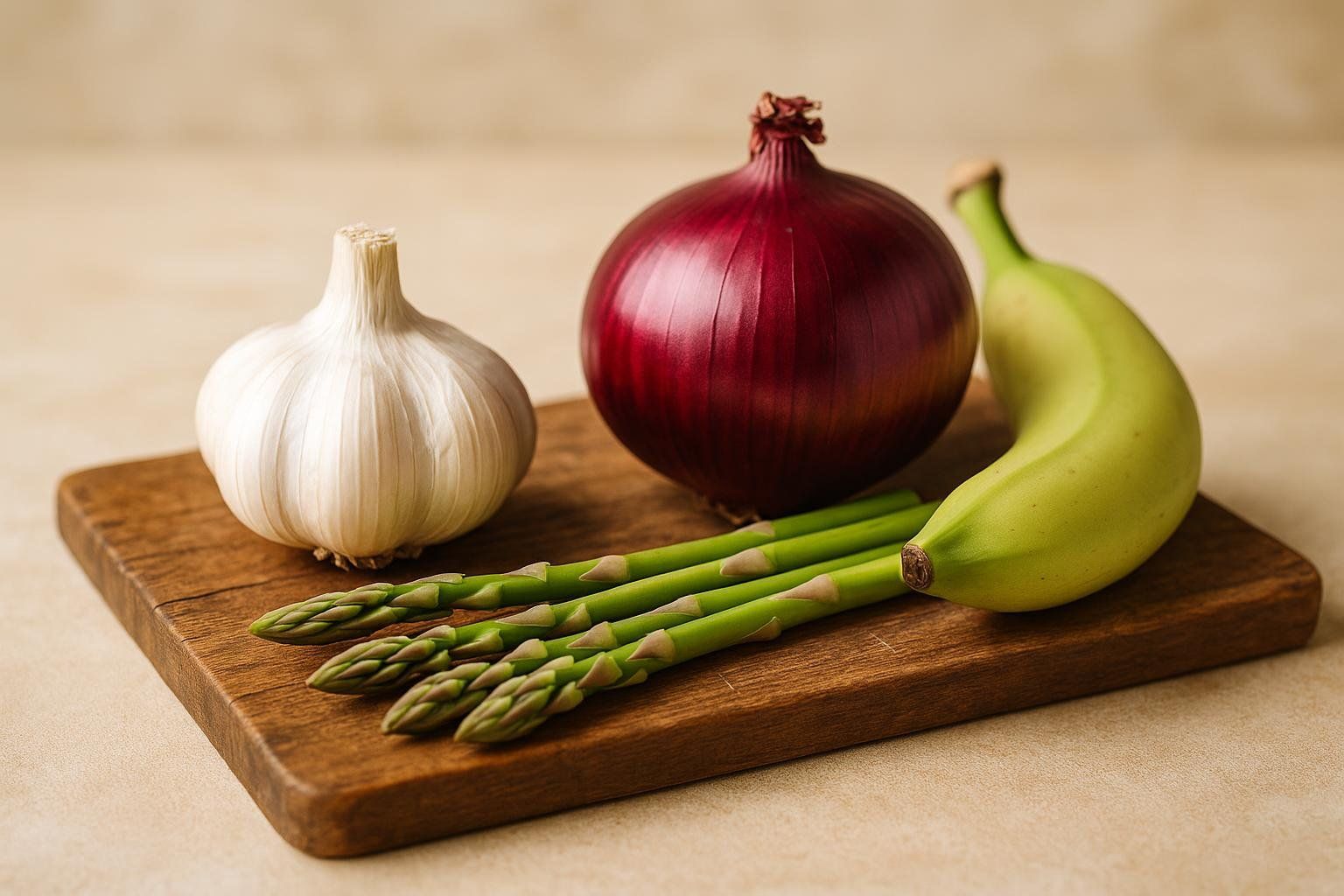
Probiotic Powerhouses
- Plain Greek yogurt with live cultures
- Kefir (dairy or coconut)
- Sauerkraut & kimchi (unpasteurized)
- Tempeh & natto
- Kombucha & kvass

Synbiotic Tip
Pair a prebiotic (chilled roasted potatoes) with a probiotic (kimchi) in the same meal for extra gut support.
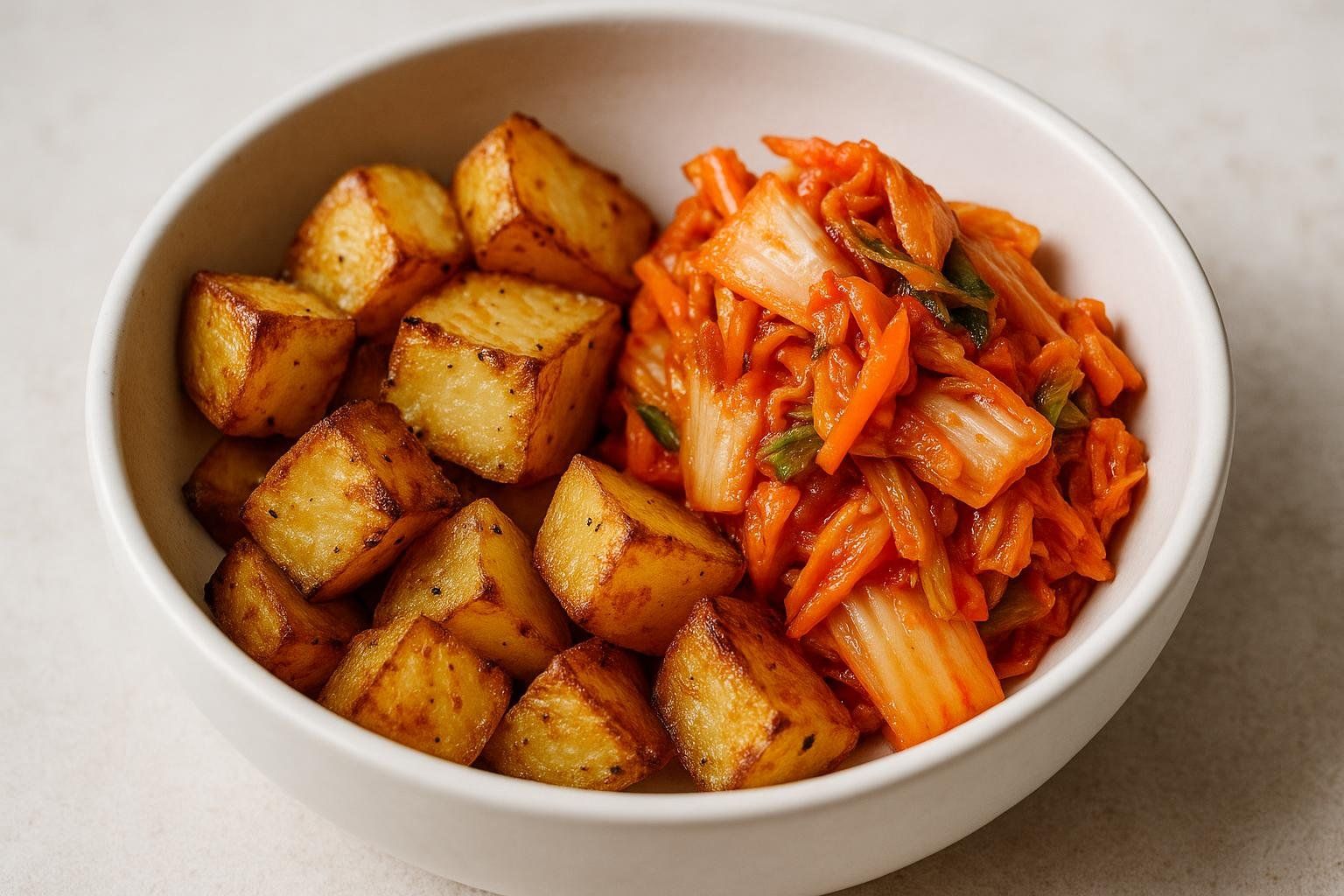
7-Day Synbiotic Meal Plan
Informational only: If you have IBS or other digestive sensitivities, introduce new high-fiber foods gradually and consult a healthcare professional before major dietary changes.
| Day | Breakfast | Lunch | Dinner | Snack |
|---|---|---|---|---|
| 1 | Overnight oats + kefir, berries | Lentil salad + sauerkraut | Salmon, quinoa, roasted onions | Kombucha |
| 2 | Green-banana smoothie + yogurt | Chickpea wrap, mixed greens | Tempeh stir-fry w/ asparagus | Apple slices |
| 3 | Avocado toast & kimchi | Black-bean chili, side slaw | Chicken, cooled sweet potato | Kefir popsicle |
| 4 | Oat-bran porridge, flax, kefir | Quinoa tabbouleh, hummus | Shrimp & garlic zoodles | Greek yogurt |
| 5 | Yogurt parfait, banana, flax | Barley & veggie soup | Beef & onion fajitas | Coconut yogurt |
| 6 | Scrambled eggs & kimchi | Lentil-walnut tacos, salsa | Baked cod, mixed-greens salad | Kombucha |
| 7 | Banana-oat pancakes | Farro & tempeh bowl | Turkey, cooled roasted sweet potatoes | Kefir smoothie |
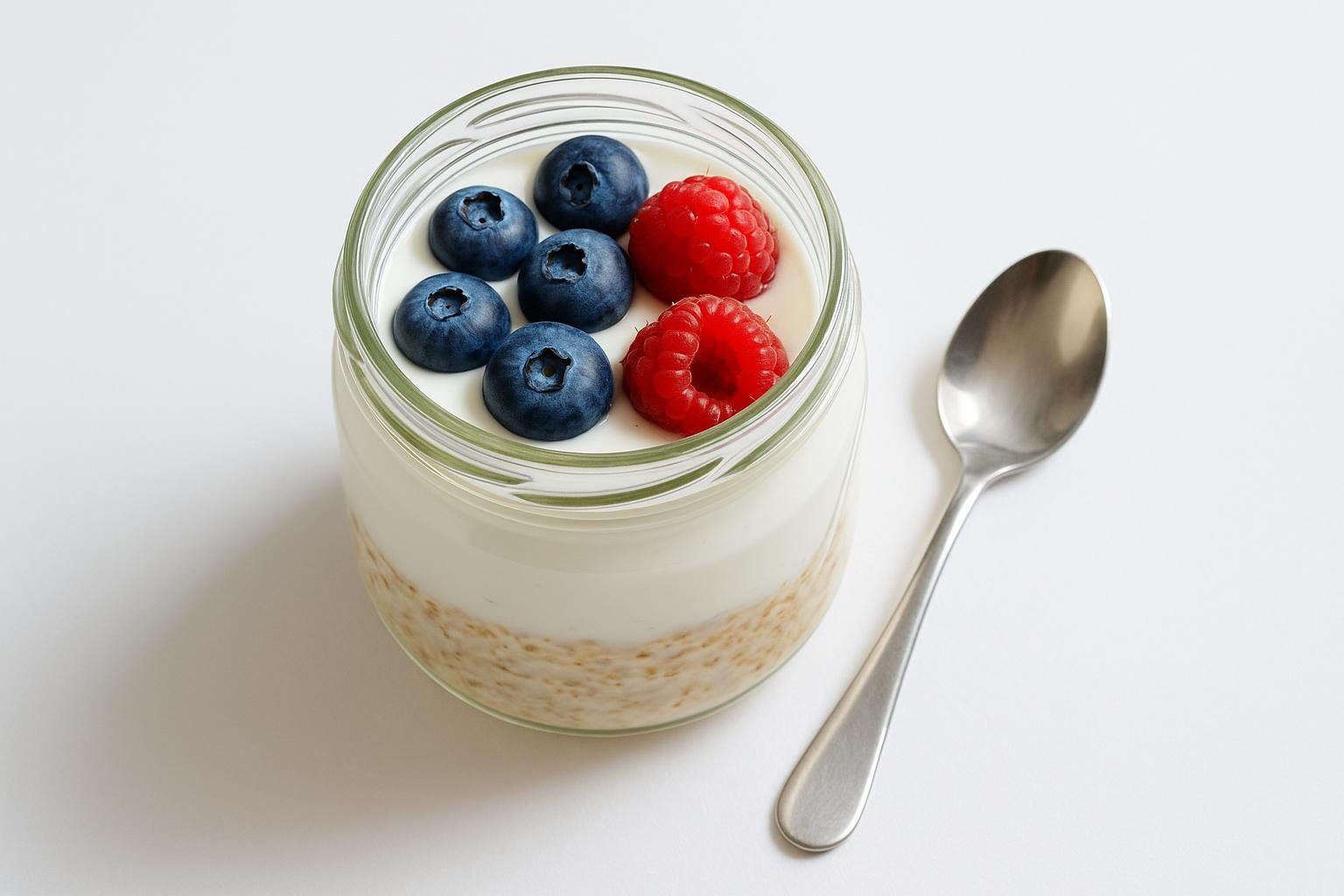
Should You Supplement?
Consider a probiotic if you:
• Are taking a course of broad-spectrum antibiotics
• Have recurrent traveler’s diarrhea
• Experience persistent IBS symptoms despite dietary adjustments
When shopping for probiotics, target products with:
- ≥ 1 billion CFU per strain
- Third-party quality testing (NSF, USP, etc.)
- Added prebiotic fibers for better survival
Consider a prebiotic powder if your daily fiber intake is below 20 g. Start with 2 g and add 1 g every 3–5 days to minimize gas.
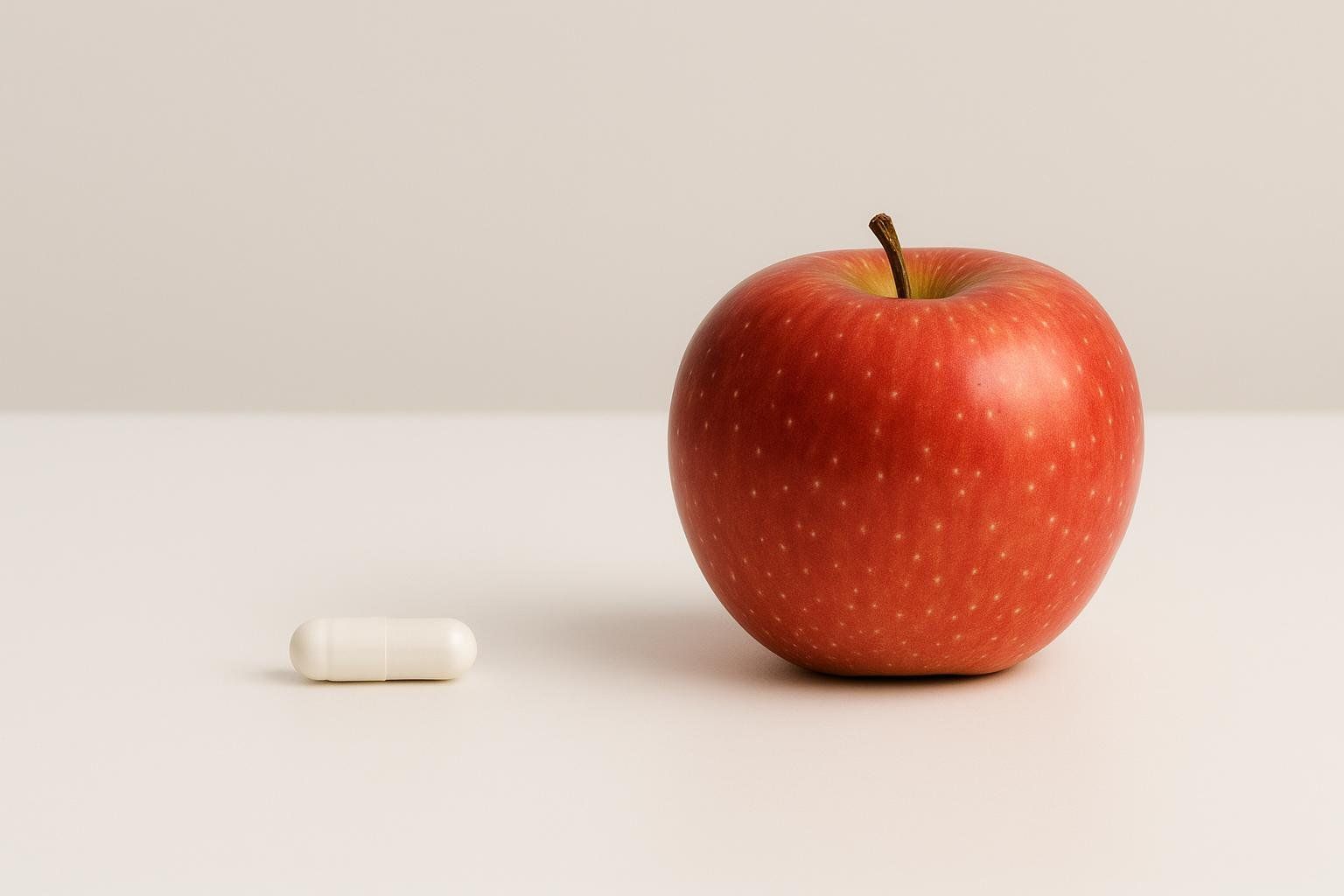
Important Note: Consult your doctor before using probiotics if you are immunocompromised, critically ill, or selecting products for an infant under three months.
Tracking Health Outcomes
An optimized gut microbiome can improve metabolic health and nutrient partitioning, which can be measured by tracking changes in:
• Body composition and visceral fat levels, measured by a DEXA scan
• Resting Metabolic Rate (RMR), waist circumference, and body weight
• Symptom diary:
– Bloating frequency
– Stool consistency (Bristol chart)
– Sleep quality
– Daily energy levels

For deeper supplement insights, explore our digestion supplements guide.
FAQ
Can I take prebiotics and probiotics together? Yes—combining them (synbiotics) often yields superior results.
Do I need them daily? Prebiotic fiber should be consumed daily; probiotic strains can be cycled based on need.
How soon will I feel a difference? Gas may increase during the first week; benefits like improved regularity often appear within 2–4 weeks.
Are they safe during pregnancy? Generally, yes through whole foods, but consult your OB-GYN before starting supplements.
Should I take probiotics after antibiotics? Some clinical guidelines suggest starting a probiotic shortly after beginning an antibiotic course and continuing for at least a week after the final dose to reduce diarrhea risk. Always confirm timing with your healthcare provider.
Key Takeaways
• Prebiotics feed your existing gut bacteria, while probiotics add new beneficial strains.
• Prioritize whole food sources—high-fiber plants for prebiotics and fermented foods for probiotics—before considering supplements.
• Choose evidence-backed probiotic strains for targeted issues like traveler’s diarrhea or IBS.
• Use synbiotic food pairings or blended supplements to maximize benefits.
• Track objective metrics—body composition, RMR, symptom logs—to evaluate real-life results.
